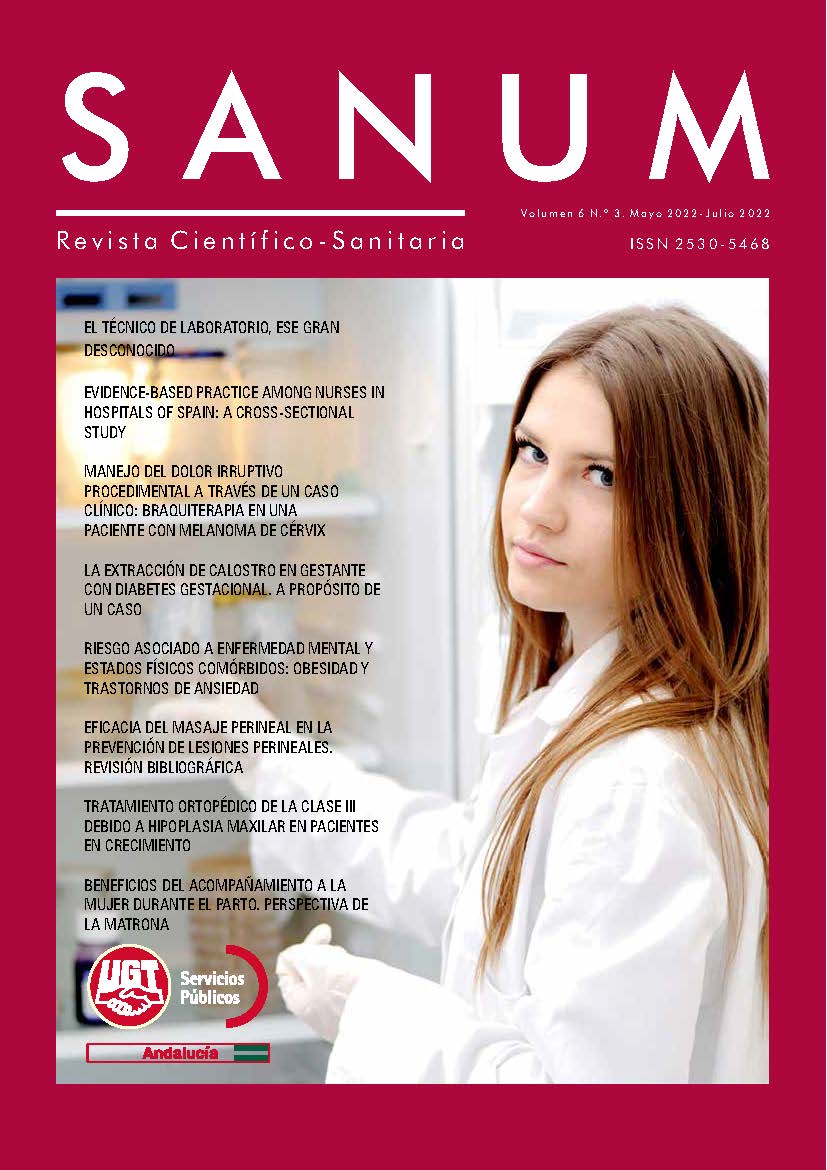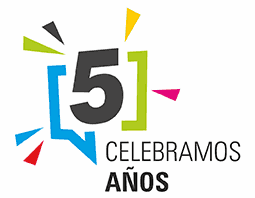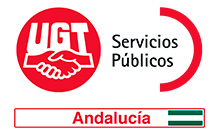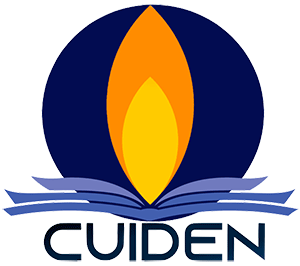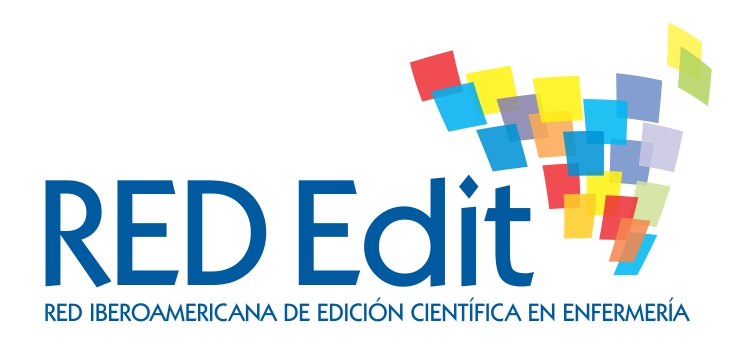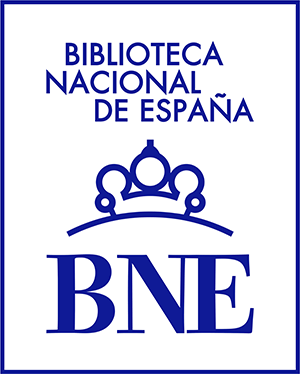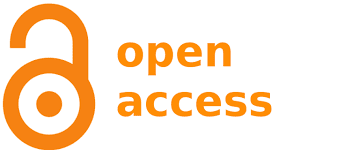SANUM científico-sanitaria is a quarterly digital journal, with scientific articles of interest for the development of the different professional health areas. SANUM publishes original and unpublished articles, which are evaluated by the editorial and scientific committee.
Papers must meet quality, validity and scientific rigor standards to promote the dissemination of scientific knowledge.
SANUM is the scientific journal of health and expression of the Federation the Public Services of UGT Andalucia, of the health, social health and dependency sectors.
SANUM is a journal of open access (Open Access). All articles are accessible immediately and permanently to facilitate reading and downloading. Included in this Open Access process is the self-archive for the authors of published articles for inclusion in repositories.
The journal is distributed under the Creative Commons Attribution-NonCommercial- NoDerivatives 4.0 International licence.
SANUM is included in the MENDELEY bibliographic manager.
SANUM has obtained the signature DORA (Declaration of San Francisco that promotes an assessment of research based on the quality of the research itself).
SANUM is published quarterly in the last week of the months of January, April, July and October .
SANUM publishes articles in Spanish, English and Portuguese.
REPOSITORIO (Sanum-re): La revista SANUM dispone de un repositorio como espacio único y abierto donde se reúne toda la producción intelectual y científica generada por los profesionales que envían sus trabajos a la revista científica SANUM.
Indexing:
The journal is indexed in:
Catalogue 2.0 Latindex.
MIAR - Matriz de información para la evaluación de revista. ICDS de 3,1.
CUIDEN. Base de Datos Bibliográfica de la Fundación Index (REHIC).
REDIB. Red Iberoamericana de Innovación y Conocimiento Científico.
DULCINEA. Derechos de explotación y permisos para al auto-archivo de revistas científicas españolas.
ERIHPLUS.
RED Edit.
BNE. Biblioteca Nacional de España.
La revista SANUM está incluida en Google Scholar(Google académico).
The journal is in the process of being indexed in various international databases..GUIDE FOR REVIEWERS (Download the Reviewers Guide )
Justification for peer review.
Peer review is a primary element of scientific publication and one of the most important pillars of the scientific process.
This method refers to the editorial practice commonly used in the review and evaluation of manuscripts of a majority of scientific journals; which consists of submitting the manuscripts received to the review by expert professionals who are not part of the editorial team, who will evaluate the rigor, quality and convenience of publishing the articles received in the journal's mailbox. These professionals value the qualities and defects of the manuscript, which will greatly help the editorial team's decision to publish or not the article in SANUM magazine. In this way, they will also contribute to improving the quality of the works published in the journal and thus have sufficient consensus, guaranteeing that the publications have greater control that certifies the quality of scientific publications.
The peer review has as its main objectives:
• Act as a filter and determine the rigor, scientific quality and originality of the work, to guarantee the suitability and guarantee of what is published.
• Improve the quality of research submitted for publication by giving reviewers the opportunity to propose improvements to the original manuscript received.
Manuscript review process.
Once a manuscript has been received in the journal reception mailbox, an initial structural review is carried out by the journal's Technical Secretariat, which assesses the aspects of the structure of minimum sections in the composition of the manuscript. If this minimum is presented, the technical secretariat under the editor's supervision will send the manuscript for its peer review process by the scientific team or by reviewers selected according to the subject of the manuscript and depending on its availability and under the coordination of the editor responsible.
General features
Peer review of manuscripts is an external and voluntary process recognized on this website with the publication of the names of the people who have collaborated each year. The request for evaluation of a manuscript by the selected reviewers can be freely accepted or declined. In case of acceptance, it is essential to comply with the deadlines established for the revision (usually about 4 weeks from receipt of the manuscript), and in case of rejection, it is also necessary to immediately notify the journal's secretariat (in a maximum period of 1 week).
In the event that the manuscript presents any reason for being returned, it is important that the reasons for such rejection be indicated for the request by the editor to the authors of the article about the improvements or changes that may be made to the manuscript or if the manuscript will definitely be rejected for publication in SANUM journal. Finally, one way or the other, it will be the publisher who decides definitively on the submission of the manuscript to the corresponding author and indicating the reasons for the rejection or the changes and improving the work on the manuscript and the definitive deadlines for new delivery of the manuscript. corrected manuscript for re-evaluation.
The manuscript is a confidential document until its potential publication. Therefore, its contents and any aspect related to the evaluation with third parties should not be discussed. The only authorized interlocutors for any matter related to the evaluation process are the management and members of the editorial team of SANUM journal.
The evaluation process is anonymous, which means that the evaluator does not know the identity of the authors of the manuscript. The evaluator can also keep their identity anonymous or, if they prefer, sign their comments to the authors.
The editorial decision on the manuscript (acceptance, return conditional on changes and / or improvements, non-acceptance or final rejection) once the results of the external evaluation have been received is communicated by the editor to the corresponding author, and also ; evaluators also receive a copy of the comments and final decision decided by the responsible editor. The decision is the ultimate responsibility of the editorial team and is based both on the comments and suggestions of the external evaluation and on SANUM journal's own editorial criteria.
Carrying out the evaluation.
The revision of the manuscript is an absolutely confidential process, and it cannot be disclosed to third parties or in any case contact the author or authors of the article. When submitting the review, please note that your recommendations will contribute to the final decision the publisher makes about publishing, re-evaluating, or dismissing the reviewed article.
The steps necessary to successfully complete the assessment include:
1. The complete initial reading of the manuscript, including abstract, text, tables and figures, and bibliography, as it would be a published work. At the same time as this first reading is carried out, it will be verified that the manuscript presents the structure and main components and in the correct order; as well as the doubtful points (for example, phrases of difficult understanding or unsupported conclusions).
2. The second reading of the manuscript, where the evaluation itself is made. Among the general aspects to be considered for evaluation, it is necessary to check the appropriateness or rigor of the manuscript to be evaluated, attending to aspects such as :
The ORIGINALITY of the article in its disciplinary field, evaluating its contribution to the area of health and / or socio-health. It is necessary to consider whether it is novel and of interest to the scientific community and whether it provides relevant news or updates to the above. Likewise, if it adjusts to the structure proposed by the editorial team of the magazine.
FORMAL ASPECTS . Value the easy reading of the text and with a wording of length paragraphs that facilitate its understanding or abuse of excessive technicalities. It must be checked if the text respects the usual organization proposed by the editorial team of the SANUM magazine regarding the order and appearance of the different sections such as Introduction, Methods, Results and Discussion. Tables and figures must be understandable without resorting to the text and complement the information in it, without repetition. It is also necessary to assess the length of the text, and if it is excessive, it may suggest reducing the less necessary part of the text. The manuscript must present in all its sections the Standards for Authors of the SANUM magazine, taking into account the particularities of each type of article (originals, case studies, protocols, theoretical updates, etc.).
ETHICAL ASPECTS , which include those of the research (privacy of study subjects, informed consent or other ethical principles of medical research in humans) as aspects of the publication itself (for example, related to repetitive publication or potential conflicts of interest).
Composition and validity of the scientific information in the article:
In the scientific validity of the manuscript, in addition to its clarity and rigor, each of the key elements of the composition and arrangement of the article must be evaluated, considering each of the following main sections:
1. Title and summary. Regarding the title, it is necessary to assess its coherence with the development of the work, if it is nonspecific, or too extensive. When the work is focused on a population group, it must be reflected in the title.
2. Keywords. They must express significant terms of the work presented and describe the main content of the article, being included in the Descriptors in Health Sciences (DeCS).
3. Introduction: it must establish the argument of the knowledge that is currently available on the research topic (background), pointing out the existing knowledge gaps and towards which of these our research is directed and tries to awaken interest in the publication. You can also describe including the hypothesis and objectives of the study.
4. Method: in this section it is necessary to check both the study design and the tools used to collect the study data. It is necessary to assess whether the study is repeatable by other researchers and the procedures used in it are detailed. Regarding materials, it is essential to assess their precise description, without trademarks or other commercial patents (except express communication of authorization and need to express it in the study). The measurements used and the samples handled must be described and correctly detailed. To assess whether an explanation of how the sex of the participants was considered in the study design and whether the setting, population and sample considered in the study are sufficiently described. When appropriate, also assess the justification for why the study is focused on a specific population (only men, only women, youth, immigrants ...)
5. Results: the essential thing is to assess whether the results provided are credible or not, this being one of the main pillars of acceptance of the article. In addition, it is necessary to check whether the research question is answered with these results and whether there are superfluous or irrelevant data that may influence the study presented. In this section, the author must explain in words what he has found in the study. You must explain clearly and in a logical sequence. It is necessary to consider whether the analysis carried out is adequate and whether the statistical data is correct.
6. Discussion and conclusions: in this section it is necessary to check if what is shown is compatible with the exposed results and if such description is reasonable. Potentially assess whether the novel and relevant aspects of the study, its limitations, and even its aspects not demonstrated in the research are shown. It is also essential if the work suggests new contributions and an impulse for new research in the future. Regarding the conclusions, on the one hand it must explain how the study contributes to the advancement in the field of scientific knowledge and on the other hand, if it responds to the objectives and questions of the research.
7. Bibliographic references: check that the bibliographic notes are correctly ordered according to their appearance and if they follow the Vancouver fundamentals in their structure. Assess their suitability and relevance, as well as if they are not very numerous or on the contrary they are scarce and with omission of important appointments. Lastly, assess whether they are current in a logical period of temporality or have become obsolete over time due to advances in scientific knowledge. If the article focuses on previous studies, check if those works are referenced appropriately or if important works have been omitted and if the references are correct.
Ethical aspects.
In evaluating the article, it is necessary to take into account the following ethical questions to be evaluated:
• Plagiarism: In case of suspicion that the article is largely a copy of another, it is necessary to indicate and even provide the manuscript or manuscripts that have been plagiarized or citing previous works that have been copied. < br>
• Fraud: It is very difficult to detect a job whose results are partially or totally false and if the methods used are not those that have actually been used and false or illogical samples have been described, but if you suspect that the Results of an article are not true, you must pronounce it in the evaluation report.
• Other ethical issues: assess whether the confidentiality of the research has been kept or, on the contrary, some accepted rule has been violated for the ethical treatment of subjects or animals, the use or otherwise of consents and ethical statements about. In all these cases, the editor must also be notified in the evaluation report that is prepared.
Article evaluation report.
Once the evaluation is completed, it is necessary to prepare and present to the editor a report with all the comments of the evaluation process carried out so that the editor can resolve the publication process in the direction that is pertinent according to his comments, as well as being able to prepare a letter of acceptance, of changes or improvements or of rejection of the article for publication, which will be addressed to the authors of the article.
When the recommendation on an article is definitively made, it is very useful to consider the following categories that the editor offers you to decide on the evaluated article:
a) Dismiss, explaining the reasons for such decision.
b) Positive evaluation, accepting the article for publication without correction.
c) Making improvements, changes or corrections that may be carried out and that consider a reevaluation of the same in a second evaluation of the article. It is essential to clearly indicate what correction is required.
It is advisable that the evaluation report contains a brief summary of the article rated as the beginning of the report, which is very useful to make the editor see that the article has been understood.
In addition, the report must contain the key elements of its review and present the points indicated in the evaluation process described above. The comment must be correct and constructive, with a respectful style and must not include comments, personal data or value judgments.
It is important to provide an idea of the deficiencies found. You should explain and defend your reflection so that both the publisher and authors can fully understand your reflections and underlying reasons for the comments posted. It should be indicated if there are comments with personal opinion or they are derived from the data of the rated article.
In the writing of the report, a series of separate comments is preferable to very long paragraphs dealing with various aspects. Whenever relevant, the location in the text of the aspect related to each commented question will be detailed, referring to the page, paragraph and phrase where the problem is found. If each comment is numbered, the evaluation of the editor and the response of the authors will be greatly facilitated.
It is very important to base each and every one of the comments made, either based on specific contents of the manuscript or other information, for example, evidence from previous studies. Thus, when necessary, bibliographic citations will be included in the evaluation to reinforce the arguments raised.
The evaluator's task is not only to assess and influence the acceptance or dismissal of the manuscript: a good evaluation also has an educational or help function for the authors, sometimes less experienced, who can benefit from the comments and the recommendations collected in the evaluation, although the decision of the journal is not to publish the work. Thus, whenever possible, it is preferable to say how a problem should be corrected or could have been corrected rather than simply indicating the existence of that problem.
GUIDE FOR REVIEWERS (Download the Reviewers Guide )
Justification for peer review.
Peer review is a primary element of scientific publication and one of the most important pillars of the scientific process.
This method refers to the editorial practice commonly used in the review and evaluation of manuscripts of a majority of scientific journals; which consists of submitting the manuscripts received to the review by expert professionals who are not part of the editorial team, who will evaluate the rigor, quality and convenience of publishing the articles received in the journal's mailbox. These professionals value the qualities and defects of the manuscript, which will greatly help the editorial team's decision to publish or not the article in SANUM magazine. In this way, they will also contribute to improving the quality of the works published in the journal and thus have sufficient consensus, guaranteeing that the publications have greater control that certifies the quality of scientific publications.
The peer review has as its main objectives:
• Act as a filter and determine the rigor, scientific quality and originality of the work, to guarantee the suitability and guarantee of what is published.
• Improve the quality of research submitted for publication by giving reviewers the opportunity to propose improvements to the original manuscript received.
Manuscript review process.
Once a manuscript has been received in the journal reception mailbox, an initial structural review is carried out by the journal's Technical Secretariat, which assesses the aspects of the structure of minimum sections in the composition of the manuscript. If this minimum is presented, the technical secretariat under the editor's supervision will send the manuscript for its peer review process by the scientific team or by reviewers selected according to the subject of the manuscript and depending on its availability and under the coordination of the editor responsible.
General features
Peer review of manuscripts is an external and voluntary process recognized on this website with the publication of the names of the people who have collaborated each year. The request for evaluation of a manuscript by the selected reviewers can be freely accepted or declined. In case of acceptance, it is essential to comply with the deadlines established for the revision (usually about 4 weeks from receipt of the manuscript), and in case of rejection, it is also necessary to immediately notify the journal's secretariat (in a maximum period of 1 week).
In the event that the manuscript presents any reason for being returned, it is important that the reasons for such rejection be indicated for the request by the editor to the authors of the article about the improvements or changes that may be made to the manuscript or if the manuscript will definitely be rejected for publication in SANUM journal. Finally, one way or the other, it will be the publisher who decides definitively on the submission of the manuscript to the corresponding author and indicating the reasons for the rejection or the changes and improving the work on the manuscript and the definitive deadlines for new delivery of the manuscript. corrected manuscript for re-evaluation.
The manuscript is a confidential document until its potential publication. Therefore, its contents and any aspect related to the evaluation with third parties should not be discussed. The only authorized interlocutors for any matter related to the evaluation process are the management and members of the editorial team of SANUM journal.
The evaluation process is anonymous, which means that the evaluator does not know the identity of the authors of the manuscript. The evaluator can also keep their identity anonymous or, if they prefer, sign their comments to the authors.
The editorial decision on the manuscript (acceptance, return conditional on changes and / or improvements, non-acceptance or final rejection) once the results of the external evaluation have been received is communicated by the editor to the corresponding author, and also ; evaluators also receive a copy of the comments and final decision decided by the responsible editor. The decision is the ultimate responsibility of the editorial team and is based both on the comments and suggestions of the external evaluation and on SANUM journal's own editorial criteria.
Carrying out the evaluation.
The revision of the manuscript is an absolutely confidential process, and it cannot be disclosed to third parties or in any case contact the author or authors of the article. When submitting the review, please note that your recommendations will contribute to the final decision the publisher makes about publishing, re-evaluating, or dismissing the reviewed article.
The steps necessary to successfully complete the assessment include:
1. The complete initial reading of the manuscript, including abstract, text, tables and figures, and bibliography, as it would be a published work. At the same time as this first reading is carried out, it will be verified that the manuscript presents the structure and main components and in the correct order; as well as the doubtful points (for example, phrases of difficult understanding or unsupported conclusions).
2. The second reading of the manuscript, where the evaluation itself is made. Among the general aspects to be considered for evaluation, it is necessary to check the appropriateness or rigor of the manuscript to be evaluated, attending to aspects such as :
The ORIGINALITY of the article in its disciplinary field, evaluating its contribution to the area of health and / or socio-health. It is necessary to consider whether it is novel and of interest to the scientific community and whether it provides relevant news or updates to the above. Likewise, if it adjusts to the structure proposed by the editorial team of the magazine.
FORMAL ASPECTS . Value the easy reading of the text and with a wording of length paragraphs that facilitate its understanding or abuse of excessive technicalities. It must be checked if the text respects the usual organization proposed by the editorial team of the SANUM magazine regarding the order and appearance of the different sections such as Introduction, Methods, Results and Discussion. Tables and figures must be understandable without resorting to the text and complement the information in it, without repetition. It is also necessary to assess the length of the text, and if it is excessive, it may suggest reducing the less necessary part of the text. The manuscript must present in all its sections the Standards for Authors of the SANUM magazine, taking into account the particularities of each type of article (originals, case studies, protocols, theoretical updates, etc.).
ETHICAL ASPECTS , which include those of the research (privacy of study subjects, informed consent or other ethical principles of medical research in humans) as aspects of the publication itself (for example, related to repetitive publication or potential conflicts of interest).
Composition and validity of the scientific information in the article:
In the scientific validity of the manuscript, in addition to its clarity and rigor, each of the key elements of the composition and arrangement of the article must be evaluated, considering each of the following main sections:
1. Title and summary. Regarding the title, it is necessary to assess its coherence with the development of the work, if it is nonspecific, or too extensive. When the work is focused on a population group, it must be reflected in the title.
2. Keywords. They must express significant terms of the work presented and describe the main content of the article, being included in the Descriptors in Health Sciences (DeCS).
3. Introduction: it must establish the argument of the knowledge that is currently available on the research topic (background), pointing out the existing knowledge gaps and towards which of these our research is directed and tries to awaken interest in the publication. You can also describe including the hypothesis and objectives of the study.
4. Method: in this section it is necessary to check both the study design and the tools used to collect the study data. It is necessary to assess whether the study is repeatable by other researchers and the procedures used in it are detailed. Regarding materials, it is essential to assess their precise description, without trademarks or other commercial patents (except express communication of authorization and need to express it in the study). The measurements used and the samples handled must be described and correctly detailed. To assess whether an explanation of how the sex of the participants was considered in the study design and whether the setting, population and sample considered in the study are sufficiently described. When appropriate, also assess the justification for why the study is focused on a specific population (only men, only women, youth, immigrants ...)
5. Results: the essential thing is to assess whether the results provided are credible or not, this being one of the main pillars of acceptance of the article. In addition, it is necessary to check whether the research question is answered with these results and whether there are superfluous or irrelevant data that may influence the study presented. In this section, the author must explain in words what he has found in the study. You must explain clearly and in a logical sequence. It is necessary to consider whether the analysis carried out is adequate and whether the statistical data is correct.
6. Discussion and conclusions: in this section it is necessary to check if what is shown is compatible with the exposed results and if such description is reasonable. Potentially assess whether the novel and relevant aspects of the study, its limitations, and even its aspects not demonstrated in the research are shown. It is also essential if the work suggests new contributions and an impulse for new research in the future. Regarding the conclusions, on the one hand it must explain how the study contributes to the advancement in the field of scientific knowledge and on the other hand, if it responds to the objectives and questions of the research.
7. Bibliographic references: check that the bibliographic notes are correctly ordered according to their appearance and if they follow the Vancouver fundamentals in their structure. Assess their suitability and relevance, as well as if they are not very numerous or on the contrary they are scarce and with omission of important appointments. Lastly, assess whether they are current in a logical period of temporality or have become obsolete over time due to advances in scientific knowledge. If the article focuses on previous studies, check if those works are referenced appropriately or if important works have been omitted and if the references are correct.
Ethical aspects.
In evaluating the article, it is necessary to take into account the following ethical questions to be evaluated:
• Plagiarism: In case of suspicion that the article is largely a copy of another, it is necessary to indicate and even provide the manuscript or manuscripts that have been plagiarized or citing previous works that have been copied. < br>
• Fraud: It is very difficult to detect a job whose results are partially or totally false and if the methods used are not those that have actually been used and false or illogical samples have been described, but if you suspect that the Results of an article are not true, you must pronounce it in the evaluation report.
• Other ethical issues: assess whether the confidentiality of the research has been kept or, on the contrary, some accepted rule has been violated for the ethical treatment of subjects or animals, the use or otherwise of consents and ethical statements about. In all these cases, the editor must also be notified in the evaluation report that is prepared.
Article evaluation report.
Once the evaluation is completed, it is necessary to prepare and present to the editor a report with all the comments of the evaluation process carried out so that the editor can resolve the publication process in the direction that is pertinent according to his comments, as well as being able to prepare a letter of acceptance, of changes or improvements or of rejection of the article for publication, which will be addressed to the authors of the article.
When the recommendation on an article is definitively made, it is very useful to consider the following categories that the editor offers you to decide on the evaluated article:
a) Dismiss, explaining the reasons for such decision.
b) Positive evaluation, accepting the article for publication without correction.
c) Making improvements, changes or corrections that may be carried out and that consider a reevaluation of the same in a second evaluation of the article. It is essential to clearly indicate what correction is required.
It is advisable that the evaluation report contains a brief summary of the article rated as the beginning of the report, which is very useful to make the editor see that the article has been understood.
In addition, the report must contain the key elements of its review and present the points indicated in the evaluation process described above. The comment must be correct and constructive, with a respectful style and must not include comments, personal data or value judgments.
It is important to provide an idea of the deficiencies found. You should explain and defend your reflection so that both the publisher and authors can fully understand your reflections and underlying reasons for the comments posted. It should be indicated if there are comments with personal opinion or they are derived from the data of the rated article.
In the writing of the report, a series of separate comments is preferable to very long paragraphs dealing with various aspects. Whenever relevant, the location in the text of the aspect related to each commented question will be detailed, referring to the page, paragraph and phrase where the problem is found. If each comment is numbered, the evaluation of the editor and the response of the authors will be greatly facilitated.
It is very important to base each and every one of the comments made, either based on specific contents of the manuscript or other information, for example, evidence from previous studies. Thus, when necessary, bibliographic citations will be included in the evaluation to reinforce the arguments raised.
The evaluator's task is not only to assess and influence the acceptance or dismissal of the manuscript: a good evaluation also has an educational or help function for the authors, sometimes less experienced, who can benefit from the comments and the recommendations collected in the evaluation, although the decision of the journal is not to publish the work. Thus, whenever possible, it is preferable to say how a problem should be corrected or could have been corrected rather than simply indicating the existence of that problem.


